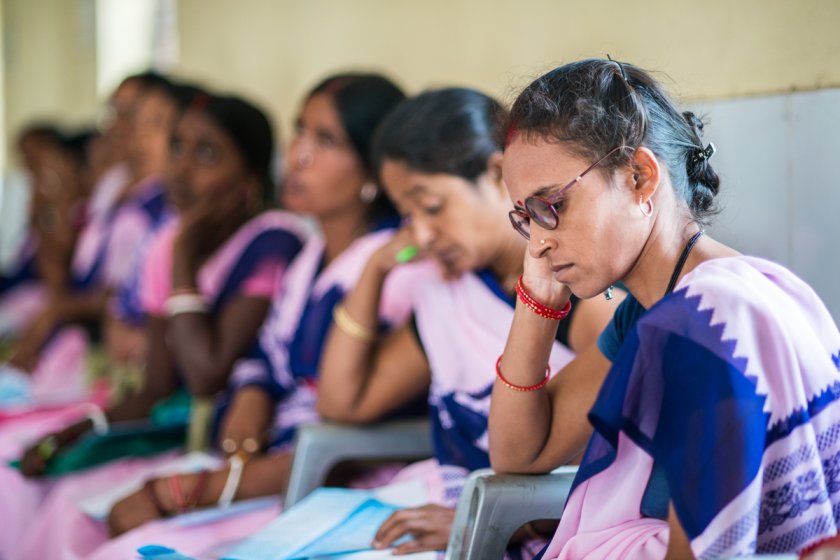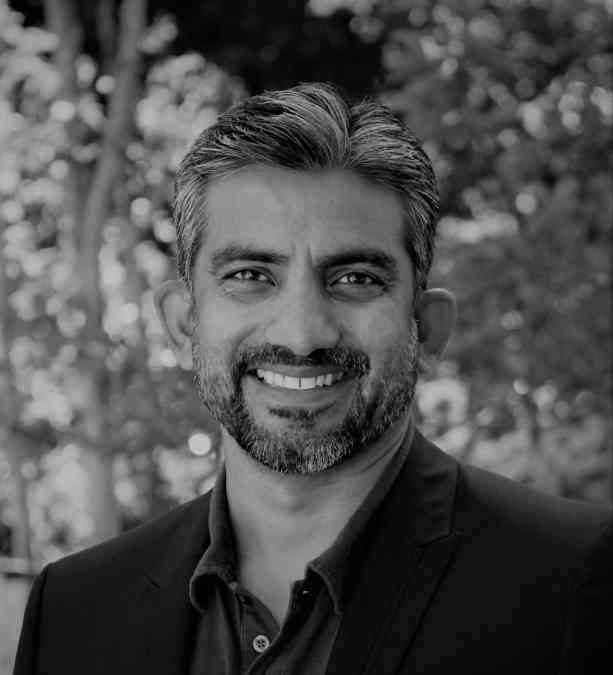Most large-scale societal development initiatives rely on the participation of community-level cadres—extension workers, local government officials, community resource persons, and so on—to deliver services. To do this, large sums of money are spent by philanthropy and government every year, to train thousands of new people on a wide range of skills.
Each year, the government trains key members of local institutions (gram panchayats) in areas such as water, health, and sanitation on key concepts, procedures, policies, techniques, and so on. With more than 2,50,000 gram panchayats in India, the number of people trained by the government alone stacks up to anywhere between 2,50,000 to 7,50,000 each year. These trainings also include introducing gram panchayat officials to new or existing national, state, and local schemes, and enabling them to take advantage of these programmes.
These large numbers of people trained do not include the millions of ASHA and anganwadi workers.
These large numbers of people trained do not include the millions of ASHA and anganwadi workers, and numerous categories of other frontline workers that engage community members each year to implement development programmes across the country.
An initiative like this must mean that people with these skills are scarce, and hence there is a need to train them and build this capacity in the system. However, people from local communities across the country have been trained on some of these topics for decades by the government as well as by nonprofits, but little or no attention has been paid to them.
Related article: Running out of work
There has been no dearth of training
The people who have been trained over the years cut across a wide swathe of profiles. They include gram panchayat and other local officials, small land-holder farmers (who also double up as extension workers or experts), women with education ranging from eight grade pass to graduates, government employees, community leaders, and young volunteers.
Despite the diverse nature of training, and the different profiles of community workers trained, many of them are underemployed.
The training they have undergone has ranged from gathering demographic data and conducting household surveys, book-keeping for self-help groups, administering and overseeing disbursal of loans, all the way to developing water budgets, building and maintaining water harvesting structures, farming practices, and so on.
Despite all of the above—the diverse nature of training, and the different profiles of community workers trained—the result is unfortunate. Many of them are underemployed. Once their projects end, they have no new opportunities to capitalise on their skills or fulfil their aspirations.
What happens to these trained practitioners?
When a project ends, usually after one to three years, the implementing organisation winds up its work, submits a report to its funders and other stakeholders, and leaves; or takes on other programme responsibilities.
The people they trained during the programme are often responsible for finding other jobs for themselves. Nowadays, we do see some organisations that help their team transition to other roles, but this is still an exceedingly small number.
Many of these practitioners often experience stagnating income from such programmes and supplement it through other means, or will shift from one programme role to another. For instance, from maternal health, to water, to farming, in search of opportunities to enhance their livelihood prospects or increase their incomes.

A majority of the workforce has the ability to get a job done, but lacks the paperwork they need to assert that skill when they look for a job. | Picture courtesy: ©Bill & Melinda Gates Foundation/Ryan Lobo
Some organisations maintain lists, but there is no reliable way to find or engage all the people that they have trained over the decades. More importantly, there is no clear and easy way for these community cadres to find opportunities where they can use the skills they have gained in the past.
So, they are often skilled but find themselves unable to use the skills they have gained. Or, they are constantly picking up new skills that reflect where the jobs are. This dilutes their ability to build expertise over time, as the environment doesn’t enable them to stick to a particular skill area for a reasonable amount of time. This, in turn, reduces the benefits they can derive from their past trainings and also impacts the quality of outcomes in programmes that rely on access to such expertise.
Community cadres must reap the benefits if we want change at scale
If we want to resolve societal problems at scale, we need skilled practitioners who choose to build expertise and use it to do good for others while being able to make a decent living.
India would not have a thriving technology or education ecosystem today if the people working in these sectors did not benefit from demand for their skills.
If we want to enable something that works and is sustainable ‘at scale’, we need to ensure non-zero-sum outcomes where benefits accrue to all actors.
Unlike ‘scaling’ something that works, if we want to enable something that works and is sustainable ‘at scale’, we need to ensure non-zero-sum outcomes where benefits accrue to all actors.
Ideally, in the social sector, much of that benefit should accrue to the community cadres that we rely on to stay engaged, build expertise, and keep applying their skills to resolve developmental challenges as they occur and evolve. Also, if we are training thousands of people each year—which we are as a sector—it means that we consider those skills scarce. As a result, people who already have those skills should be in demand, and that demand should translate into their economic well-being as well.
If that is not visible, we should suspect the scarcity, and wonder if we even need to train so many people. Or we should consider that there might be an absence of an enabling environment that makes it efficient for skilled people to find jobs, and jobs to find skilled people. Either way, we cannot sustain and invest in training with a hope of reaching scale, without ensuring that whoever is already skilled is visible, accessible, and accruing the benefits.
Related article: Employability training: The skills we should be focusing on
What is the solution?
Anyone involved in capacity building—government agencies, nonprofits, research organisations—has a responsibility to ensure that every person attending their trainings is empowered to show proof of that training.
According to a recent ILO report, barely three percent of the Indian workforce has technical education at tertiary level, and another 7.2 percent has general academic education at tertiary level. As recently as 2017-18, only 2.4 percent of the workforce has formally acquired any vocational education or training that they can use to assert their qualifications and access opportunities.
A majority of the workforce develops skills in small doses, has the ability to get a job done, but lacks the paperwork they need to assert that skill when they look for a job. Imagine if every participant gets proof—a certificate or some written confirmation—for every training they attend or micro-skill that they develop (which would often be achieved outside the formal education system).
We, at Socion, are working on one such approach where a participant uses a mobile app to register their presence in a session and gets a digital attestation after each training session, with details that are non-repudiable and can be digitally verified after the fact.
We need to work collectively to ensure that the people who do have skills are considered for new opportunities first, before we train more people.
Give participants ownership of a record of their skills, so they can be the custodians, and share it as and when they need to.
Until now, we have relied on implementing organisations to do this—to collect and share lists of people trained. But they have failed. A better way might be to give participants ownership of a record of their skills, so they can be the custodians, and share it as and when they need to. By doing this, any programme or entity that wants those skills can focus on efficient ways to allow such people to identify themselves as eligible candidates, like a marketplace where individuals apply for jobs.
The challenge in the social sector is that we have not adequately empowered this skilled personnel to tell us what they have learnt or done over the years. We have focussed on the supply-side, and amplified efforts to train more and more people to participate, but failed to address meaningful ways for (already) trained people to participate in new opportunities.
Related article: Sustainable livelihoods: Where donors need to focus
The benefits to the community cadres would be tremendous
For the cadres, this is likely to translate into jobs, more income, promotions based on the skills they accumulate over time, an opportunity to contribute, social equity, and most importantly, pehchaan (identity)—all things that we take for granted in the commercial world.
Given the technology and the appetite for scale from different stakeholders, we now have the ability to do this. What we need is a shift in mindset that first, acknowledges that this leakage in training and capability building could impede our ability to deliver impact at scale. And second, shifts our ways of working to a more demand-driven approach. At the moment it is a supply-side model, where we are endlessly training people with little or no regard to whether they can continue to participate, contribute, and benefit from applying such skills in practice.
Unless we help these large cadres of people make a decent living wage and build career pathways, we will continue to start each year as if we have no one with any skills across the country. And we cannot solve the problem at scale this way.
—
Know more:
- Read this handbook by the National Rural Livelihoods Mission on building the capacity of community cadres.
- Learn more about why we need to strengthen the role of community resource persons in the delivery of last-mile services.
- Understand some of the challenges faced in the implementation of rural development programmes.




